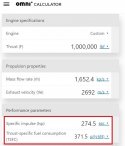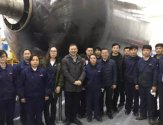Like I said it's not supposed to be exact, which it really isn't for the reasons you mentioned. Just throwing metrics around as something to ponder on the point of China now having "the world's most powerful solid booster". If CASC claims their 150t class SRB with 500t/f is the most powerful to-date, I see little point in disputing that claim.It's hard to say which rocket motor is the more efficient without knowing the fuel burn rate for each of them which in turn depends on how fast they are designed to burn.
An example would be that a star-shaped surface would increase the burning surface area and thereby increase the thrust as opposed to a cylinder-shaped surface.
So we are really talking about the specific impulse here which we have no way of knowing without the fuel burn rate or the total fuel burning time of the specific rocket motor that was tested.
Like-for-like I think the 1,000t variant that they've got planned, which is gonna be multi-segment, would be a more apt comparison, if one were to make a comparison.
Still, just for the sake of discussion, even CZ-11 which is much smaller than the SSSRB has a higher Isp like I pointed out (248 seconds vs 237 seconds if I'm correct). The P241 that's currently on the Ariane 5 is probably as close of a comparison to the SSSRB while still being smaller , while the new P120 slated for Ariane 6 that Temster also linked to does away with the segmental config entirely, and it sits even higher at 278s despite having a smaller mass.
So yeah, scaling up affords more performance in terms of thrust produced is pretty much a given, but not necessarily always the most efficient (although the SSSRB does enjoy a boost (!) in Isp from 237s to 262s by adding that extra 5th segment), which is why I said throwing more mass at the problem by scaling the CZ-11 up from a 2m/35t class motor to 3.5m/150t wouldn't necessarily produce the same results we see with this new SRM, otherwise there'd be no point to these tests.
That being said, without getting way too technical which would be simply beyond me, the fact that this SRM can produce 500t/f from 150t of solids while its closest equivalent being the P120 which also produces similar results, notwithstanding that we're missing a few important details, specifically the mass flow rate and exhaust velocity for the SRM, assuming those are on par with the P241/P120 specs, a very rough ballpark could still be worked out which puts it roughly around the mid-270s range, possibly even higher at high-270s.
Not too shabby, at least quite a bit more efficient than the SSSRB already while able to achieve higher specific impulse at the same time.
SRM 500 -

SSSRB Block 1B -









